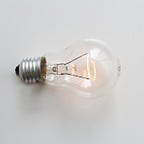How to Read Critically
Once upon a time, I was a young Earth creationist who believed the Bible was the infallible word of God. Admittedly, I shudder somewhat looking back on those times now. While I no longer see those positions as credible, the sense of embarrassment that still lingers has more to do with why I accepted them and defended them. In retrospect, I had very naive ideas about what it means to learn and understand something — specifically what it means to have beliefs that are reasonable and well-supported.
Sometimes we have a difficult time opening ourselves up to things that we perceive as threatening to our cherished beliefs. In certain communities, there is the troubling notion that merely exposing yourself to too much outside influence can shake the foundations of your faith. On the other hand, if one’s beliefs can be so easily toppled, can we really honestly say they were worth holding on to in the first place? Isn’t it better to cherish what we have good reason to believe is true or right, rather than simply clinging to what we prefer to believe?
Despite the name, reading critically isn’t necessarily about subjecting what you read to ruthless criticism. It might just as well be called evaluative reading. The point is to give a deeper analysis to a text than what appears on the surface, or even what we may carry to it in terms of biases and assumptions. Critical reading implies a…
